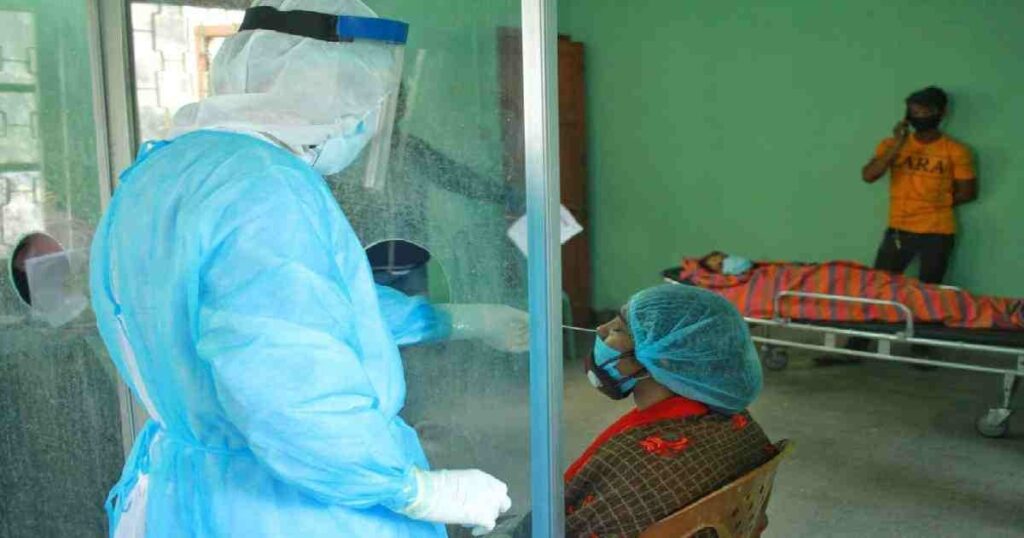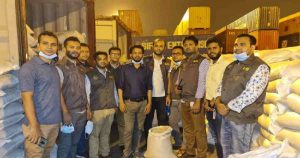Dhaka, November 19 – Bangladesh is now apparently back to the alarming situation it largely saw a few months back when Covid-19 was at its peak in the country.
After showing an erratic decline for nearly 70 days, the coronavirus cases keep growing again over the last few days with over 2,000 infection cases getting registered each day.
The main worry is that the number of deaths jumped to 39 on Tuesday from 21 on Monday, indicating that the virus is getting deadlier as the day temperature has started falling.
The number of corona patients is also increasing at different hospitals over the last few days, prompting the public health experts to urge the government to equip all the hospitals, including the Upazila health complexes, with necessary equipment, including adequate oxygen supplies, to ensure proper healthcare services to the infected people.
They also warned that the nation will have to ‘pay dearly’ in the days to come when the temperature will come down to below 15 degrees on average if the government fails to take necessary preventive measures, including forcing people to maintain health safety rules and wear masks mandatorily when they come out of home.
Corona Situation & Statistics
Bangladesh on Wednesday reported 2,111 Covid-19 cases in 24 hours, pushing up the total tally to 438,795.
Bangladesh’s health authorities also announced the death of 21 more deaths from the virus during the period that took the total casualties to 6,275.
According to the Directorate General of Health Services (DGHS), the death rate from the virus now stands at 1.43 percent.
So far, 354,788 patients — 80.86 percent — including 1,893 new ones recovered in the last 24 hours.
Earlier on Monday, the country recorded 21 deaths and 2,139 infections from coronavirus with a positivity rate of 13.57% and this was the highest number of infections registered in a single day in the last 70 days.
Earlier on September 7, the country recorded 2,202 corona positive cases and the number of virus cases started falling erratically since then.
Bangladesh registered its first three coronavirus cases on March 8 last while the first death on March 18.
According to statistics received from the DGHS, over 4,000 people were infected with coronavirus while around 50 died on average every day during the peak of the corona outbreak in May and June months. The positivity rate –an indicator of the prevalence of the disease –was 24-25% at that time.
But from the last week of September, the infection rate began subsiding a little bit. At one stage, the infection rate came down to 10 percent in October, but now it has started growing again.
On October 31, 1,320 new infections from coronavirus were recorded in the country with 11.45% positivity rate.
The rate of patient admission is also increasing at public and private hospitals designated for the treatment of corona-infected people in the city. On November 1, 688 people were admitted to Covid hospitals in the capital against 3,519 beds.
The number of patients in those hospitals has increased to 1939 in a span of 15 days. The admission rate of patients on November 1 was 46.98% in the capital which rose to 55.11% on Monday last.
Talking to UNB, former World Health Organisation (WHO) Regional Advisor Muzaherul Huq said the fatality from the virus will surely increase during the winter months as people are susceptible to many cold-related diseases like bronchitis, pneumonia, and asthma. “If anyone having such a disease is infected with corona, it’ll be difficult to save his life. So, the mortality rate can go up.”
He said the government should motivate people to maintain the health safety rules, like wearing masks, frequently washing hands with soaps, using sanitiser, maintaining social distancing, avoiding public gatherings and staying in quarantine after coming close to any infected people.
Strain on Hospitals
President of Swadhinata Chikitsak Parishad Dr Iqbal Arsenal said the government needs to make all the Covid-dedicated hospitals ready for dealing with the increasing number of corona patients in the days to come as the situation is getting worse again with the arrival of winter.
“Every upazila hospital has an isolation centre, but lacks necessary equipment, medicines, and oxygen supply, safety gears, and high-flow nasal cannula. Besides, ICU beds and oxygen plants should be installed at the district hospitals,” Iqbal viewed.
He said the nation had to pay a heavy price in the past for lack of logistic support. “I urge the government not to repeat the mistake this time. The government should keep an adequate number of safety gears ready for health workers to tackle any alarming situation.” – UNB




